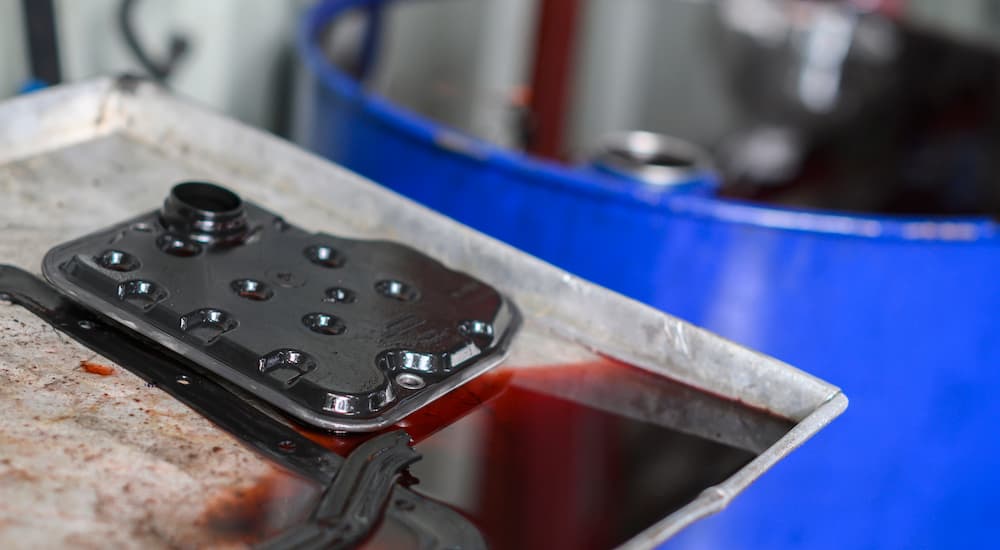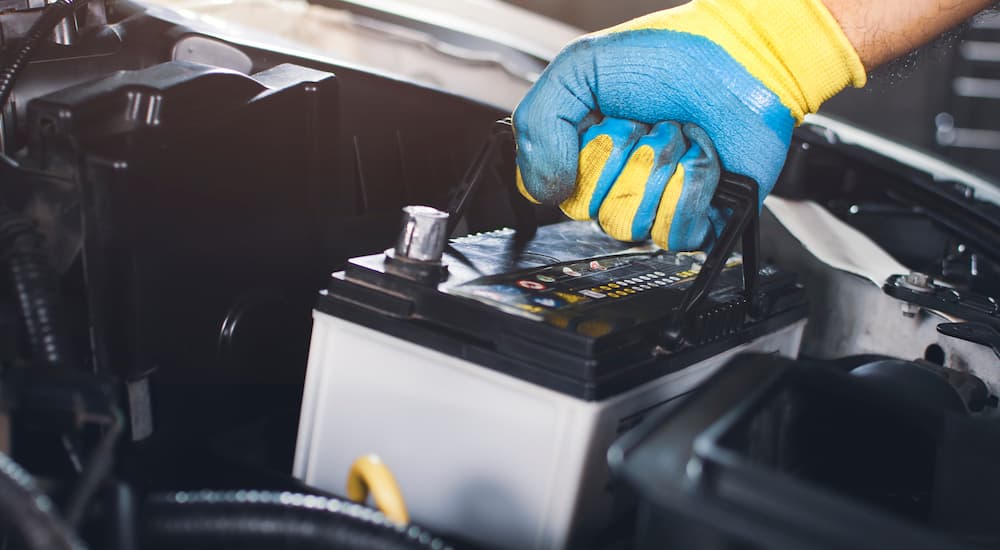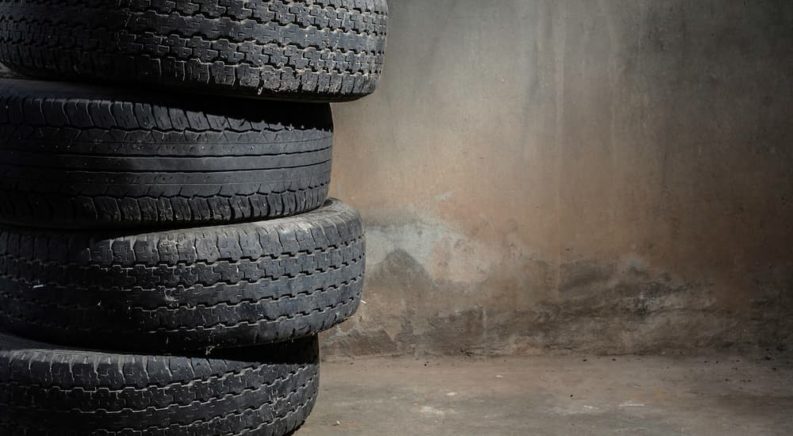Taking the DIY approach to car maintenance and repair can save drivers a lot of money and help them build up a better understanding of their vehicle, but it can also result in a lot of waste that’s hard to get rid of. The various fluids and components that might end up in the junk pile often require a very specific disposal routine owing to the toxic, poisonous, and otherwise unpleasant chemicals and materials used in many of today’s vehicles.
If you’re wondering how to get rid of old parts and fluids, this guide is for you, so read on for a few helpful tips and tricks that will keep you and the environment safe. More often than not, the answer to these questions is simply going to come down to the old tried-and-true “take it to your local hazardous waste disposal facility,” but there are some exceptions. We’ll get into the specific disposal methods for each fluid or component, delve into why some are so hazardous, and give you a look at what becomes of them after they’ve been disposed of.
Automotive Fluid Disposal Basics
Before we get into specific disposal methods, let’s cover a few basic rules to follow when it comes to using, storing, and eventually disposing of various automotive fluids. First, keep all fluids stored separately in sealed containers. Different fluids are going to require different disposal methods, so as tempting as it might be to combine all your used fluids into one big automotive cocktail, it will make the resulting slurry next to impossible to get rid of. These fluids should be kept in sealed containers until they’re ready to be disposed of and kept well out of reach of children and pets.
Using the right type of container is also important as some fluids have specific storage requirements. For example, transmission fluid has a tendency to quickly eat through or dramatically soften some flimsier types of plastic containers like milk jugs, so if you’re going to use a plastic container to store automotive fluids, make sure it’s made of high-density polyethylene (HDPE). The easiest solution is just using the original container a fluid was sold in, so embrace your inner pack rat and don’t throw those bottles out. Regardless of what type of container you use, always leave a little room to allow for expansion. Some fluids might give off gasses that can cause a container to bulge and, in some cases, even rupture.
Lastly, make sure your fluids end up in the right place. Many auto parts stores accept fluids like coolant, and your local mechanic might help you get rid of some hazardous fluids if you’ve got a good working relationship, but these aren’t your only options. Many municipalities have dedicated hazardous waste disposal sites where various automotive fluids can be disposed of. Do a quick internet search for the type of fluid you’re trying to dispose of along with the name of your city, town, or county, or simply use a website like Earth911, which allows users to search for waste disposal sites in their area.
Many of these municipal sites charge a small fee and often aren’t open every day of the week, but many do run “free” disposal days where fees are waived, so if you plan ahead, it’s not hard to get rid of fluids without paying a dime. Of course, not every automotive fluid qualifies as hazardous waste, and some, like transmission fluid and motor oil, can simply be taken to any automotive fluid collection site instead of a dedicated hazardous waste facility, so read on to see which types qualify.

Coolant
Typically made from a half-and-half mix of water and ethylene or propylene glycol, automotive coolant plays an important role in keeping engine temps down when things start to heat up. The water might be harmless enough, but the addition of glycol as an antifreeze/anti-boiling agent makes the coolant into a toxic substance that can affect the central nervous system, heart, and kidney if ingested by humans or pets.
Coolant can be disposed of at many auto parts stores or even local mechanics, who may or may not charge a small fee for the service. Most cities and towns also offer a household hazardous waste collection program, though they’re often limited to residents of the municipality. Websites like Earth911 are a great resource when it comes to tracking down hazardous waste disposal sites, allowing users to search by zip code and type of waste. Just make sure to keep the coolant in its original container and never mix it in with motor oil.
What Happens To It?: While most coolant is generally labeled as hazardous waste and disposed of, some gets recycled and is then used to make new coolant. Metals, oils, and other debris is filtered out, resulting in relatively clean coolant that can help to produce future batches.
Motor Oil
Motor oil isn’t the most dangerous fluid under the hood of your vehicle and can usually be disposed of at local auto parts stores. This is often the most convenient option as it will allow you to stock up on new oil when you go to drop off the old batch. It can often also be taken to local recycling centers or municipal hazardous waste facilities; just make sure to call ahead and ensure they’re open for the day and accepting drop-offs. Of course, changing out motor oil usually involves changing out the oil filter at the same time, but most any facility that takes used motor oil will also accept used motor oil filters.
What Happens To It?: Used motor oil is often recycled for use as home heating oil or filtered and processed into a new batch of lubricant. Oil filters are also recycled, with their steel components used to make new filters and other automotive components.

Transmission and Brake Fluid
As we mentioned before, some fluids should never be mixed, no matter how convenient it might be. Transmission fluid and brake fluid are great examples as they each have very different disposal requirements. Sometimes these disposal requirements can even vary when dealing with the same type of fluid. For example, transmission fluid comes in three types: automatic, manual, and synthetic. While the first two are made from crude oil, synthetic transmission fluid is altogether different. It’s more resistant to decomposition and should not be mixed with non-synthetic transmission fluid.
Regardless of which types you’re dealing with, all three can be dangerous to both living things and the environment, so proper disposal is very important. Make sure to plan ahead when disposing of transmission oil––the average transmission can hold up to three gallons of the stuff, so you’ll want to have a large container on hand.
Brake fluid is just as nasty and is not only poisonous but also flammable. While some mechanics like to stick by the old method of pouring old brake fluid into a tray of kitty litter and letting it evaporate, that method holds a little too much risk of accidental contamination to be recommendable. Play it safe and put brake fluid into a sealed container until it can be disposed of at a local hazardous waste facility. Some facilities might require the brake fluid to be disposed of in a specific type of container, so check online or call ahead before you drive over there with an old Big Gulp container brimming with the stuff.
What Happens To It?: Old transmission fluid can be recycled into a new batch or even burned as heating oil. Brake fluid can also be recycled into alternative fuels once it’s been properly mixed with a variety of other fluids.
Parts Disposal Basics
While not necessarily as dangerous to people or the environment, many auto parts also require specific disposal methods. From tires and batteries to lights, glass, and scrap metal, the average DIY project can produce waste that’s not always very easy to throw out or recycle. We’ll get into some specifics below and help you determine how to best get rid of some common automotive parts and components.
Tires
When your tires no longer have enough tread to safely grip the road, it’s time to switch them out for a new set. A tire’s tread life can vary depending on the type of use, road conditions, and other factors, but no matter how much you baby them, they’ll eventually pass the point of no return. When this day comes, it’s important to make sure you dispose of your tires in a safe, responsible way.
There are a couple of options available for those seeking to dispose of tires. Some cities and towns will accept tires at their municipal recycling centers, while others will run one-off tire recycling events. Auto parts stores are another option, though, like the municipal facilities, they’ll also often charge a small fee of between $5 and $10 per tire. Then there’s the DIY route. Tires can be a great building material and can be used to construct everything from planters and sandboxes to stair treads or even a good old tire swing.
What Happens To It?: The rubber compounds found in tires are still plenty useful after all the tread has worn off. Shredded tires can be turned into soil additives and asphalt or used to construct safe playground mulch or turf surfaces for sports use.

Car Batteries
Despite that snarky, viral Quora inquiry from a couple of years back, used car batteries should, obviously, not be thrown into the ocean. Car batteries are actually one of the rare used vehicle components that can actually net you a profit. Today’s car batteries are built using a variety of expensive chemicals and elements, some of which can be salvaged even after the battery has turned over its last starter.
While it’s nice to think of such recycling schemes as free money, the reality is that retailers include what’s known as a “core charge” at the time of purchase; essentially a deposit designed to motivate drivers to properly dispose of old batteries. It’s a good system, given that old car batteries are prone to leaking dangerous chemicals if not properly disposed of, with the $10 to $20 return bonus acting as a nice little incentive. If your battery has already started to leak, make sure you wrap it in heavy plastic while transporting it for disposal, as the caustic chemicals can wreak havoc on your skin and your vehicle’s interior.
What Happens To It?: Car batteries can easily be rebuilt once they run out of juice, which is another reason many retailers offer compensation for old batteries. The cores can be reused with the lead elements recycled to make new batteries.
Other Vehicle Parts
- Headlights: The majority of headlights can be easily disposed of in the regular household trash, though there are some exceptions. Halogen, xenon, and LED bulbs are all safe for the landfill, but high-intensity discharge (HID) lamps are another story. These contain mercury, a dangerous element that needs to be properly disposed of at a local hazardous waste facility.
- Glass: Auto glass can be disposed of in the household trash or, ideally, by recycling. Just make sure to place all the pieces or shards in a brown paper bag prior to disposal so they don’t eviscerate your garbage bag from the inside out.
- Belts and Hoses: Belts and hoses are generally fine to be recycled or trashed through regular household methods; no special trips required.
- Brake Pads: Brake pads might seem relatively innocuous, but some contain asbestos. If you know or even just suspect that your brake pads might contain asbestos, they should be taken to, you guessed it, your local hazardous waste facility.
- Large Metal Waste: Generally speaking, any metal components that aren’t contaminated with oil or other dangerous fluids can be disposed of in the metal recycling section of your local dump. Some larger components, like engine blocks, doors, or fenders, might actually net you a profit at a junkyard, so make that your first trip and see if you can collect a couple of bucks before moving on to the dump where you’ll have to pay to toss them out.
Now You Know Where Your Automotive Waste Should Go
Clean-up is never the most fun part of any automotive project, but it’s an important part of keeping your family, pets, and environment safe. While it might seem a bit obnoxious to pay out of pocket to simply get rid of some garbage, it ensures that dangerous chemicals and parts will be properly disposed of. If you play your cards right and do a little research, it’s easy enough to help defray some of these costs, either by finding free drop-off events or outlets that will take fluids and materials for free. In some cases, you can even turn a profit from disposing of automotive waste, though this is largely limited to batteries and heavy metal components.
Resources like Earth911 are helpful for locating hazardous waste disposal sites in your area, but local auto parts stores, mechanics, and the local dump can also be good options. Just make sure to exercise caution when dealing with any hazardous chemicals, wear appropriate safety gear and dispose of chemicals in the right kind of container.

